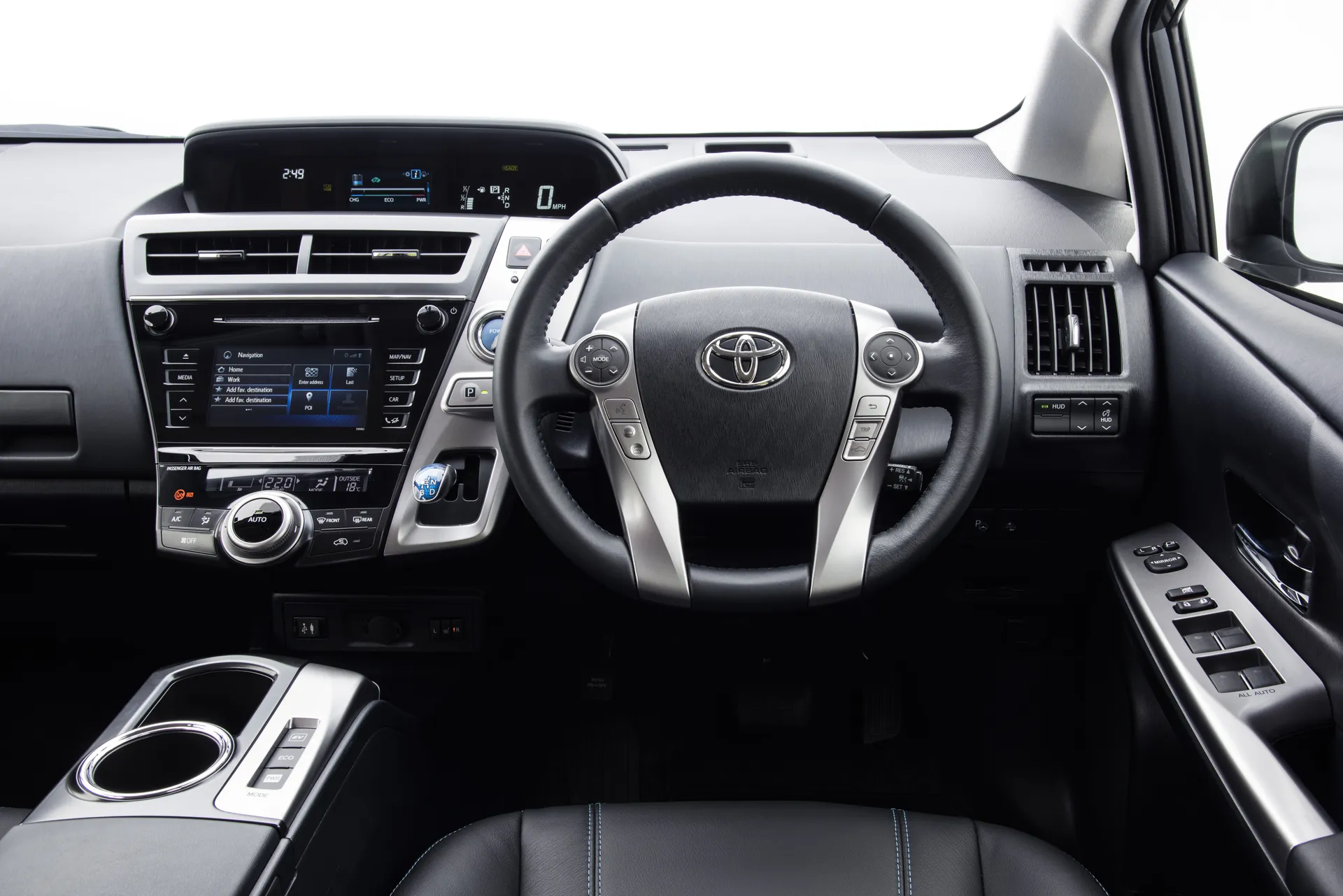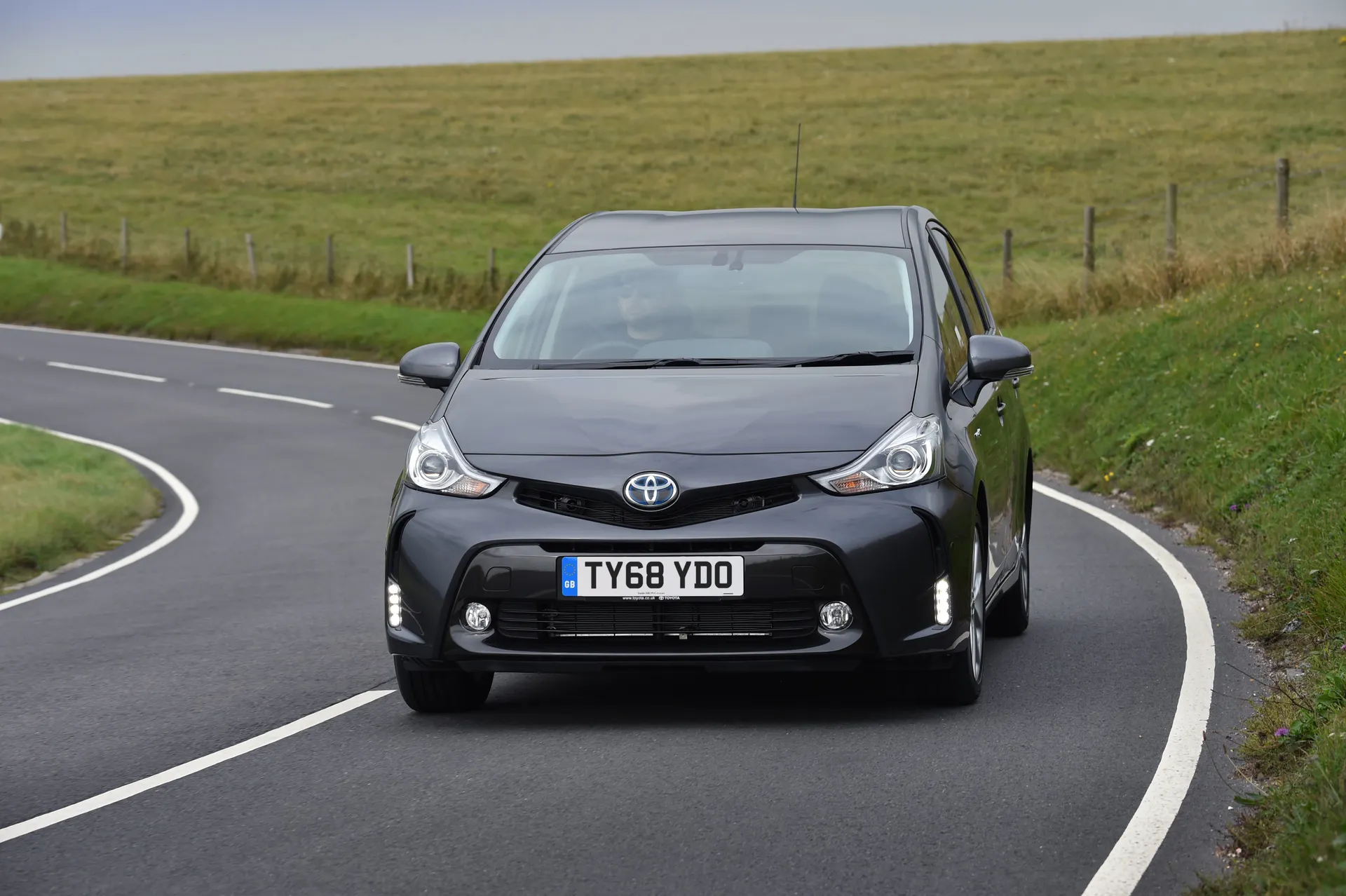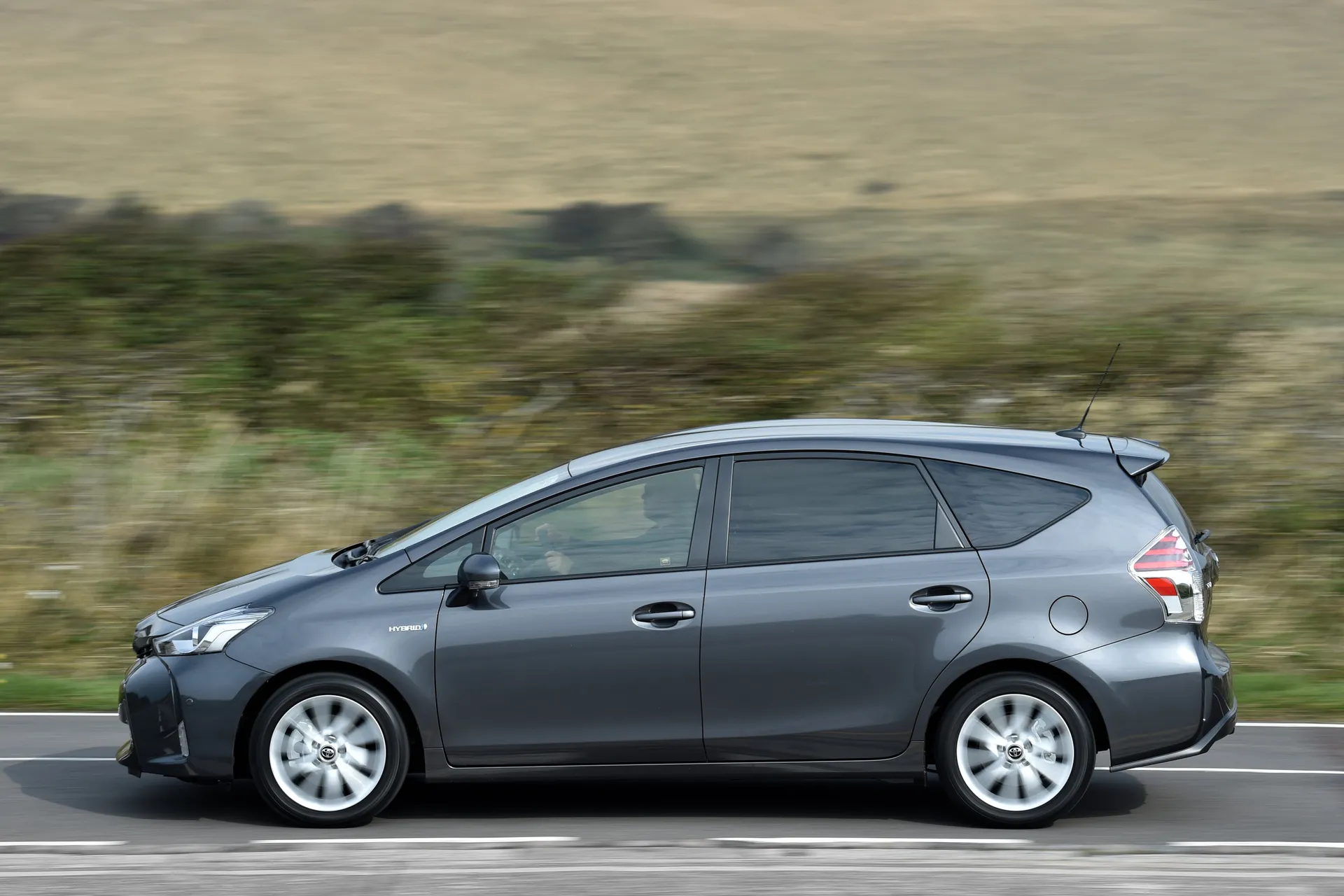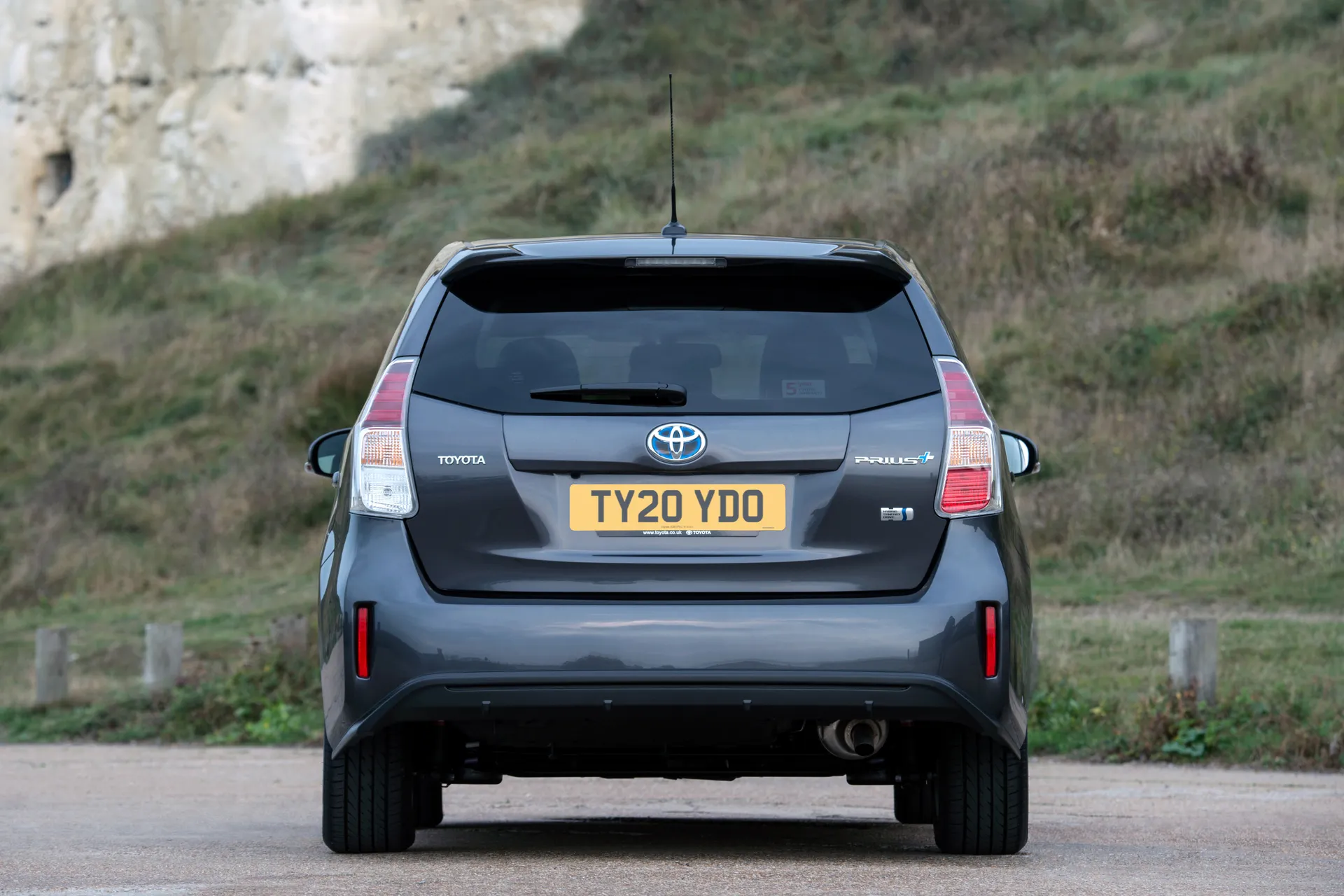Used Toyota Prius+ (2012-2020) Review
Written by Andrew Brady

- 2012
- MPV
- Hybrid
Find your perfect Audi with heycar
Quick overview
Pros
- Flexible seating for seven people
- Easy to drive and to live with
- Comes loaded with standard equipment
Cons
- Expensive to buy new
- Based on the previous generation Toyota Prius
- No longer the eco star it once was
Overall verdict
"It’s getting increasingly difficult to recommend the Toyota Prius+. The modern breed of electric cars and plug-in hybrid vehicles, while expensive, offer significant efficiency gains wrapped in a more desirable package. However, if you’re after a seven-seat MPV, the Toyota Prius+ is your only option."

The Toyota Prius+ is the world’s first – and so far, only – seven-seat full hybrid vehicle. Launched in 2012 and updated in 2015, it ploughs a lonely furrow, looking increasingly like a square peg in a round hole.
It’s based on the previous-generation Toyota Prius, which puts it at a disadvantage in the wake of the latest breed of electrified vehicles. Unless you really need the third row of seats, we’d suggest looking at the latest Toyota Prius for an efficient hybrid, or the excellent Toyota Corolla Touring Sports estate for practicality.
It’s not all bad news. Although you’re limited to just one engine, the 1.8-litre petrol-electric hybrid is smooth and efficient, offering the ability to cover around a mile on electric power only. This is a car designed for urban driving and the occasional trip beyond the city limits. If you spend most of your time on the motorway, a diesel or an efficient petrol engine would be more suitable.
The cabin is showing its age, with dashboard architecture that’s based on the old Prius. Everything is mounted on the centre console, which is surrounded by a sea of grey plastic. On the plus side, although the materials used are nothing to get excited about, everything feels robust and built to last. This is a Toyota after all...
A good level of space in the front is matched by similar levels of roominess in the second row. Things are less positive in the third row, where the seats are best reserved for children or occasional use. On the plus side, Toyota’s ‘Easy Flat 7’ system offers a flexible seating arrangement, with a completely flat floor when the second and third rows of seats are folded away.
There are also plenty of storage bins and pockets, including a pair of gloveboxes, plus a central storage bin that can be accessed from both the front and rear seats. Unfortunately, space in the boot is limited when all seven seats are in place, but this is a problem affecting all seven-seat MPVs.
We’d say that the Toyota Prius+ drives like you’d expect a seven-seat MPV to drive, but it’s much better than that. It corners well, the steering is direct and ride quality is excellent, especially for a car weighed down by a battery pack.
Unfortunately, the 1.8-litre engine is no firecracker, while the CVT automatic transmission does its best to get in the way of enthusiastic driving. Although three driving modes are available, we’d recommend sticking it in ‘Normal’ and letting the computers take the strain.
In many ways, it’s hard to mount a credible case for the Toyota Prius+. It’s too expensive, dull to look at, boasts a cabin that lacks flair or imagination, and it won’t be particularly economical if you spend most of your time out of the city.
However, it’s your only choice if you’re after a seven-seat hybrid MPV. It’s also backed by a comprehensive warranty and Toyota’s excellent reputation for reliability. Maybe it’s not so bad after all.
Looking for a used car for sale? We've got 100s of Toyota Approved Used Cars for Sale for you to choose from, including a wide range of Toyota Prius+ models for sale.
Is the Toyota Prius+ right for you?
What's the best Toyota Prius+ model/engine to choose?
What other cars are similar to the Toyota Prius+?
Comfort and design
"The dashboard layout will be familiar to anyone with experience of the Toyota Prius, with the controls and displays mounted on the centre console. It’s based on the old model, so is beginning to show its age, lacking the drama and interest of the latest Prius."

The instrument binnacle is mounted on the top of the dashboard and shows the speedometer and hybrid system indicator. It feels odd at first, but you’ll get used to it after a few miles. It’s actually quite relaxing to use on a long journey.
Other Prius hallmarks include the small shift lever mounted alongside the steering wheel, a large centre armrest, a start button and a cupholder that looks like it was based on the size of the largest American takeaway soft drink.
The driving position is excellent, aided by standard-fit electric lumbar support for the driver’s seat and that massive centre armrest. All-round visibility is similarly good, although the view out of the back window is restricted if the rear seats are occupied.
Although the dashboard lacks flair, changes introduced in 2015 serve to make Prius+ ownership a more pleasurable experience. Highlights include a dark silver metallic finish for the switchgear and a chrome effect for the door handles. Toyota also introduced a 4.2-inch TFT display atop the dashboard, along with chrome-trimmed air vents.
Quality and finish
Infotainment
Space and practicality
Handling and ride quality
"'Fall in love with driving again,' proclaims Toyota in the brochure for the Prius+. Honestly, you’ve got more chance of falling in love with driving again by taking the bus. A less memorable driving experience is hard to find.

Not that this matters, because we doubt anyone will ever buy a Prius+ to go chasing sports cars and hot hatchbacks along a country road. Having said that, the Prius+ is far more pleasant to steer than you’d think. You’re unlikely to fall in love, but you won’t be sending hate mail either.
It corners quite tidily, with steering that’s direct if lacking in feedback. You’ll also experience less body-roll than in some rival MPVs, although the Prius+ will lean like a tower in Pisa if you take a bend too enthusiastically.
The Prius+ comes into its own in the city, where its good visibility, light steering and relaxed CVT transmission make it easy to park and manoeuvre. The ride quality is excellent, especially on the smaller 16-inch alloy wheels.
There are three on-demand driving modes: EV, Eco and Power. The latter is the one to use for making swift progress, as it increases throttle response by 25 percent to improve acceleration. It’s worth noting that the CVT transmission doesn’t react well to sudden inputs, with anything other than a relaxed right foot sending the system into a tailspin. You’ll also put a big dent in the fuel economy, which kind of defeats the object of the Prius+.
The car will start in EV mode, using just electricity to provide instant power and a smooth pull away. It will continue to run on electric until it reaches a speed of 31mph, at which point the petrol engine comes into play.
In Eco mode, the throttle response and air conditioning are reduced to improve efficiency. Toyota says fuel economy improves by 10%, but the knock-on effect is acceleration that feels like you’re pushing a wooden spoon through a barrel of treacle.
Engines and gearboxes
Refinement and noise levels
Safety equipment
How much does it cost to run?
"The Toyota Prius+ offers a claimed 47mpg to 48.7mpg on a combined cycle. These figures are based on the more reliable World Harmonised Light Vehicle Test Procedure (WLTP), which replaced the old New European Driving Cycle test (NEDC).

You should use these figures when considering the purchase of a Prius+, even if the quoted figures are higher. That’s because the old figures of 64.2mpg and 68.9mpg were recorded using the NEDC method.
Insurance groups and costs
VED car tax
How much should you be paying for a Toyota Prius+?
"Toyota Prius+ prices start from around £9000. This price is based on UK-registered cars, but it is possible to find Japanese imports for a little less. Grey imports tend to be low-mileage cars, but will come without any UK service history."

You’ll need to spend at least £13,500 on a post-facelift Prius+, but you’ll face competition from Uber drivers, especially in and around London. Crucially, the hybrid powertrain was upgraded in 2015 to comply with Euro6 emissions standards.
New and nearly-new cars tend to be available with a discount of up to £1000, but we’d recommend buying a 2019 example. Because the Toyota Prius+ suffers from relatively heavy depreciation, you’ll save around £10,000 by buying a car up to a year old. These cars will have the bulk of the original five-year warranty intact.
Trim levels and standard equipment
Get our latest advice, news and offers
Keep me updated by email with the latest advice, news and offers from heycar.
By submitting you agree to our privacy policy


